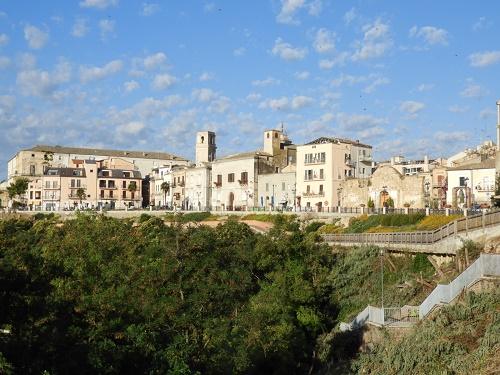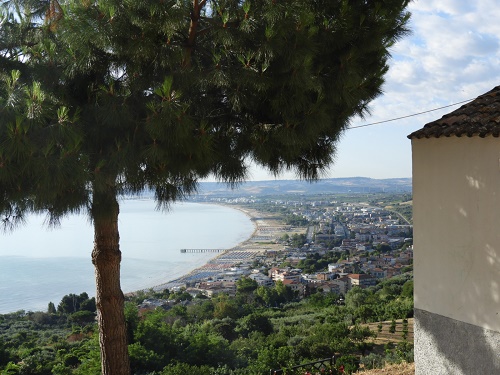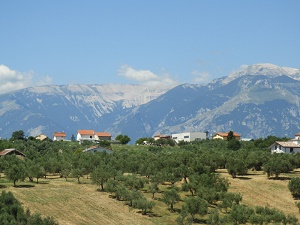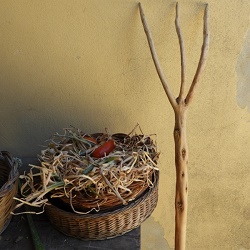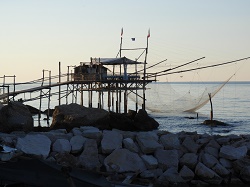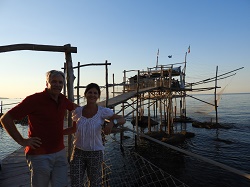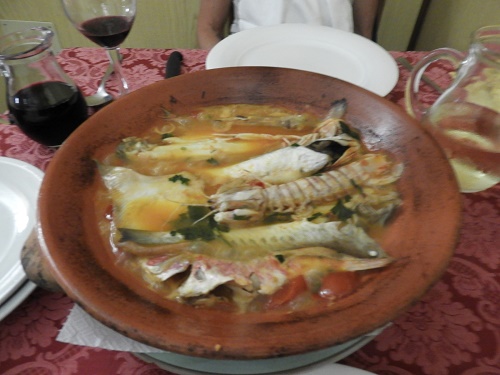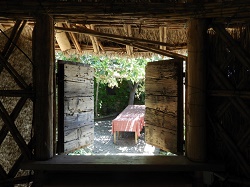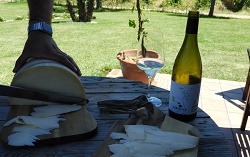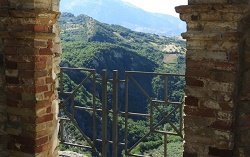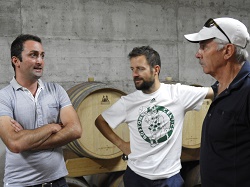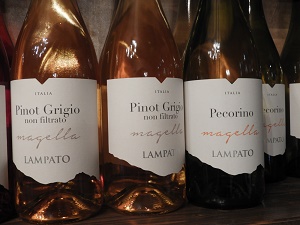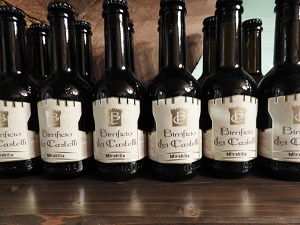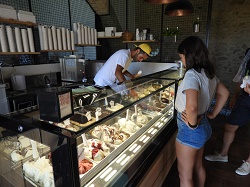We are heading into week 3 of 4 weeks and 4 regions across Italy. Exploring the best locavore be it wine, food, dairy products, or Olive oil, so far we have seen the Veneto & Piemont. Now we head south by train from Milan to Vasto in Abruzzo, a journey that takes about 6 hours in the comfort of a Trentalia bullet train. Abruzzo is south of the Marche, east of Lazio & only a couple of hours drive from Rome airport. Its relatively unaffected by international tourism and hugely popular with the Italian travellers seeking an affordable holiday. Life in many of the villages is as it was centuries ago , methods of farming, agricultural practises, and food preparation are very traditional.
So, armed with our Slow Food bible, The Osterie & Locande D’Italia, and accompanied by our Italian partner, we set out to explore, at a slow pace, the wonderful region of Abruzzo.
* Abruzzo cuisine is the traditional cuisine of Abruzzo, it is very wide and is originally from the traditions of both pastoral and mountainous inland areas that marinate in the coastal zone; among the foods most commonly used are: bread, pasta, meat, cheese and wine. The isolation that has characterized the region for decades has ensured that it maintained a culinary art alive and independent. Abruzzo boasts a cuisine distinct within Italy, well known for its variety and richness owing to the heterogeneity of its territory. The mountainous, agricultural, and coastal aspects of Abruzzo have contributed to its cuisine. Due to the mountains themselves, much of Abruzzese cuisine grew separated from the influence of international commerce and civilization until the 20th century, fostering a unique culinary tradition. (* as decribed by Wikipedia)
Below its towering peaks, Abruzzo’s long coastline stretches for kilometres along the Mediterranean, where there has long been a rich tradition of fish and seafood dishes. The most beloved among locals is Brodetto di Pesce, traditionally a “poor man’s” tomato chowder made from the motley assortment of fish and seafood leftover from each fisherman’s morning catch. Now considered a regional delicacy, the recipe varies from town to town along the coast– you can sample Brodetto alla Giuliese, Brodetto alla Pescarese, or Brodetto alla Vastese depending upon where you are served up a bowl—but expect to find an assortment of scampi, cod, mullet, sole, dogfish, and skate.
There are some very special Agriturismo in the region, some highly aclaimed by the Slow Food Presidia and it is a wondetrful experience to spend time with these people who openly share their traditional methods from paddock to plate.
We dined one night at Ristorante Da Marino up in Vasto, reccomended by our local friends specifically to try the amazing Brodetto alla Vastese, and it was easy to see why so many of these dishes were coming out from the kitchen. Truly delicious.
The Trabocchi Coast, is a 70-kilometer region stretching from Ortona to San Salvo, with coves and reefs below the hills that end at the Adriatic Sea marked by the spread of Trabocco, fishing machines on piles. It is a stretch of coast famous throughout Italy for its natural beauty and for its diversity and traditions. We had a wonderful evening with our Italian partner and a group of Italians experiencing dinner on the amazing platforms built out over Adriatic. This features in our new tour, now available on the tours page The Trabocchi are very old and fragile structures that have resisted the weather conditions through the decades and now play an important part in cultural tourism for the region.
Abruzzo recipes are often highly spiced with chili peppers, typical for much of Southern Italy. Of course, rosemary, garlic and wine are used extensively in Abruzzi cooking. Saffron is commonly used in cooking, despite being more expensive per gram than truffles or caviar. Most of Italy’s saffron is supplied in this small area of the country.
Pescara is a coastal city and a popular holiday destination a large rail terminal, and has a substantial airport. As for dining experiences there is a lot to choose from. There are some very good osteria featured in the Slow Food guide, and we dined at one of the oldest, in the old part of the city. Its very traditional, open since 1980, and has a wall of awards from Slow Food. The kitchen finds the right balance between tradition & innovation and turns out a varied original menu. The anti pasti includes river fish, tripe with shavings of Pecorino, Castelvecchio chickpea polenta & baccala with sweet rosemary, or pate of Muscovy duckling.
Wines of Abruzzo The region has three main, DOCs, including the red Montepulciano d’Abruzzo and white Trebbiano d’Abruzzo. The third DOC of Controguerra is also for wines based on Montepulciano and other native grapes, although a small percentage of Merlot, Cabernet Sauvignon and Cabernet Franc is permitted in the blend. However, it is the Montepulciano grape that really shines in Abruzzo.
Not to be confused with the town in Tuscany, the Montepulciano grape has gained a substantial following for its fruit-forward, complex yet approachable reds. Some of the best wines come from the Teramo area, where a single DOCG exists for Montepulciano d’Abruzzo Colline Teramane, while some classic rosé wines – known as Cerasuolo – are now offered under their own DOC appellation. A recent reorganization of region’s wine classification system has also brought under the new Abruzzo DOC several interesting, high-quality sub-zones for Montepulciano wines, such as Terre di Casauria, Terre dei Vestini and Alto Tirino.
Cheeses of Abruzzo. The region has 3 recognised cheeses, Canestrato di Castel del Monte, ( A Presidio Slow Food) Marcetto, and Pecorino di Farindola.
We have developed a tour that includes many off the beaten track experiences, from Agriturismo, to wineries, Trabocco dining, cheese making, Olive oil producers, and allowing time to explore some of the wonderful villages dotted through the region. Vasto has been our base, a hilltop village of 40000 inhabitants, boosting 20 to 30 Osteria, Trattoria and Ristorante offering insanely good local cuisine and vino.The views from most are overlooking Vasto Marina, and there is nothing better than an aperitif at sunset followed by the biggest decision of the day, where to dine. Italians come out for passeggiata at about 730pm and everything comes alive by 9pm.
For more information on this region and our new tour click here
http://wineandfoodtraveller.com/grouptour/get/JUST-LAUNCHED-Explore-Abruzzo-Puglia-Basilicata-Matera

